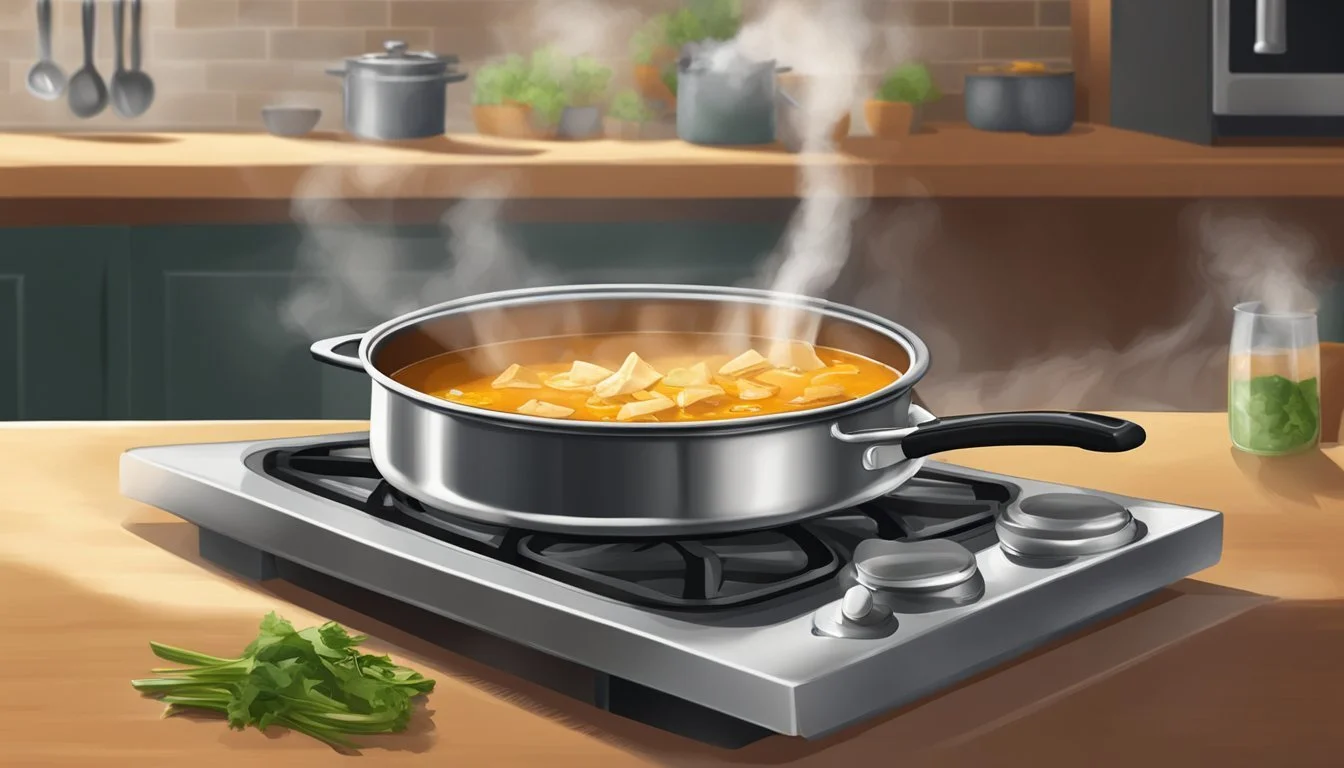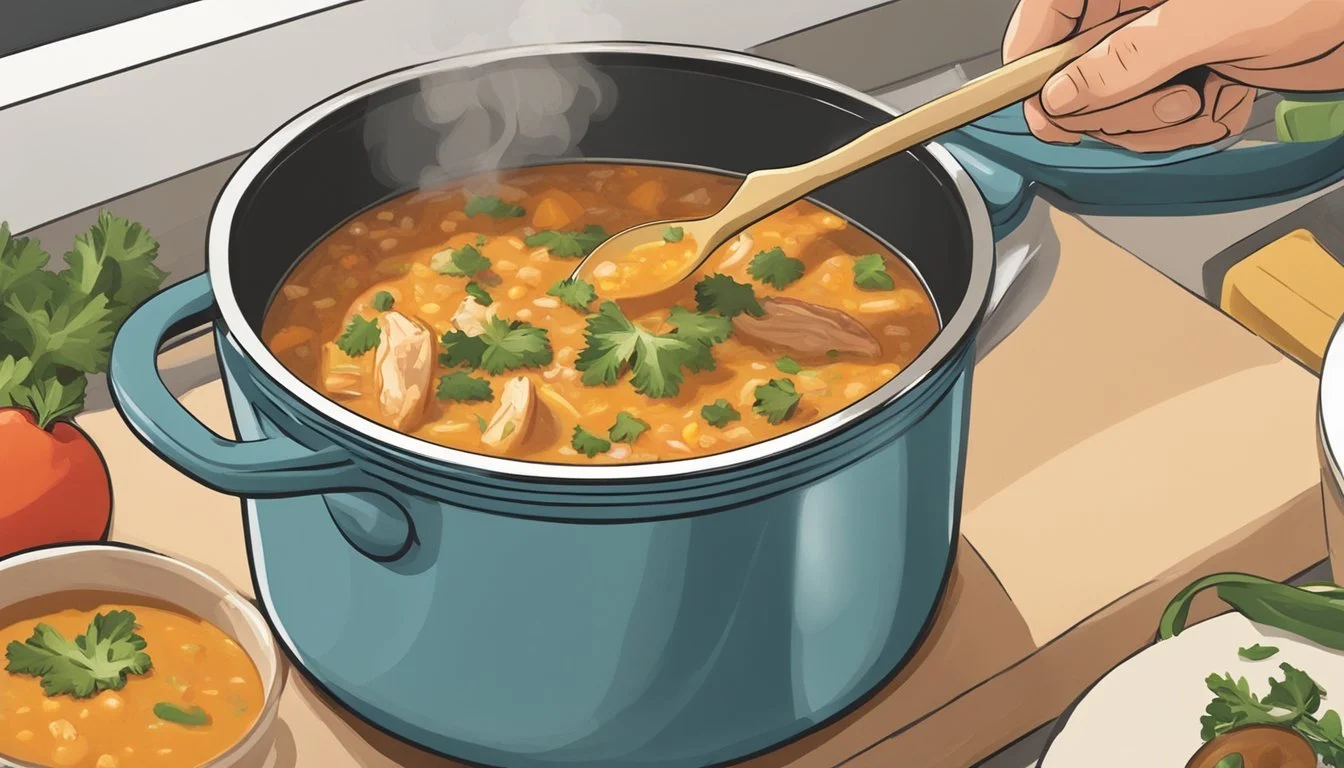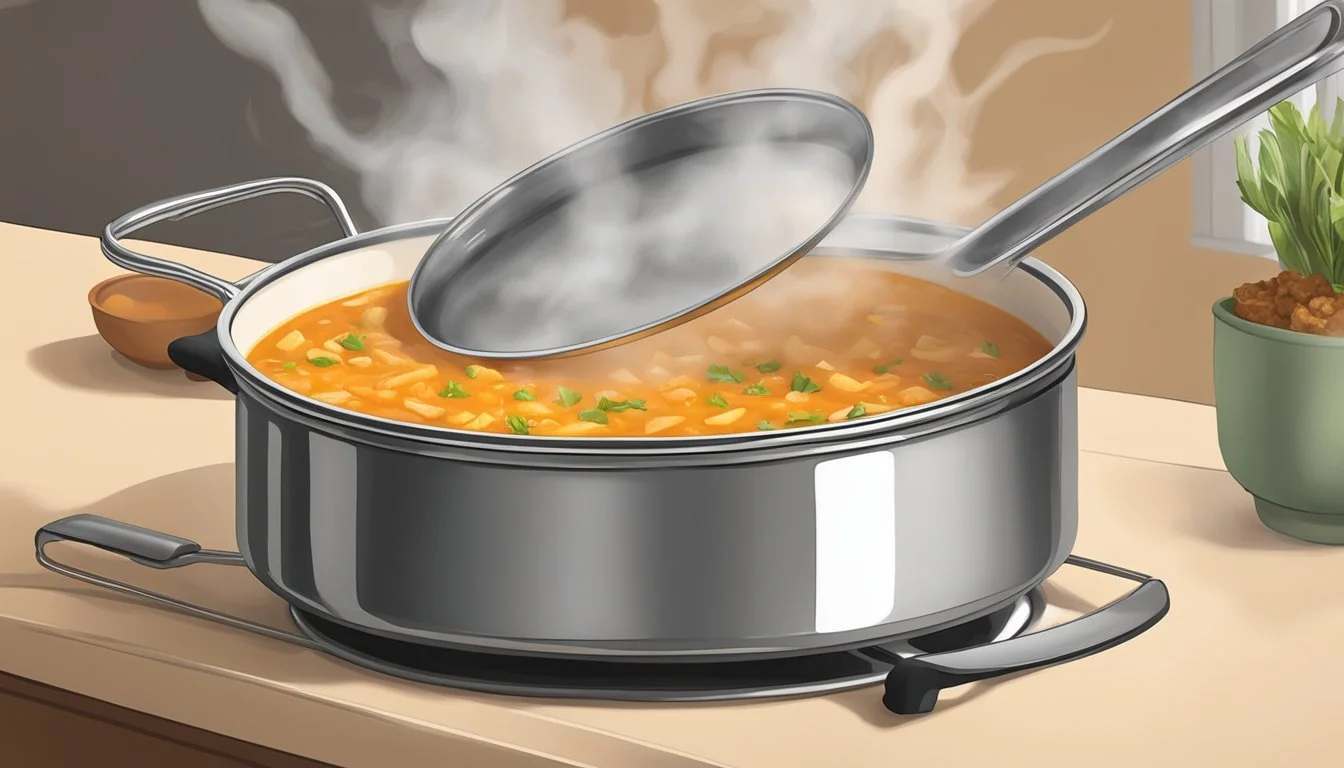How to Reheat Chicken Enchilada Soup
Expert Tips for Perfect Warmth
Reheating chicken enchilada soup doesn't have to be a complicated task. To ensure the soup maintains its delicious flavor and creamy texture, consider the method that best suits your needs. Whether you decide to use the stovetop, oven, or microwave, each option has its unique benefits.
For those with a bit more time, reheating on the stovetop or in the oven offers even heating. Simply pour the soup into a saucepan or oven-safe dish, cover it to retain moisture, and warm it gently until it reaches the desired temperature. This method is excellent for preserving the rich, zesty flavors that make chicken enchilada soup a favorite.
If convenience is your priority, the microwave is your go-to. Place single servings in a microwave-safe bowl and heat for 1-2 minutes. Stir midway through to ensure even warming. This quick method is perfect for enjoying this flavorful soup without a lengthy wait.
Understanding Chicken Enchilada Soup
Chicken enchilada soup combines a variety of flavorful ingredients to create a comforting, hearty dish. This section will explore the key ingredients and nutritional value of this delicious soup.
Key Ingredients
Chicken enchilada soup features a blend of chicken, veggies, spices, and other savory components. Key ingredients include cooked and shredded chicken breast, often simmered in a robust chicken broth.
Enchilada sauce forms the base, adding depth and complexity. Diced tomatoes and green chiles provide a tangy contrast, while onions and garlic cloves offer a flavorful backbone.
Commonly added veggies include bell peppers, corn, and black beans, enhancing the texture and adding nutritional benefits. Spices like cumin, chili powder, and paprika further amplify the taste.
Creaminess is often achieved by stirring in cream cheese or sour cream, and the soup is typically garnished with cheddar cheese and fresh cilantro for a finishing touch.
Nutritional Value
Chicken enchilada soup is not just tasty but also nutritious. It provides substantial amounts of protein from the chicken breast, which is crucial for muscle repair and growth. The inclusion of black beans and chicken broth contributes to the protein content too.
Vegetables like bell peppers and corn offer a good source of fiber, essential for digestive health. These veggies, along with diced tomatoes, also provide vitamins and minerals, improving the body's immune function.
Spices such as cumin and chili powder not only add flavor but also offer various antioxidants. Adding green chiles and onions enhances vitamin C intake, which is important for skin health and immunity.
Overall, a well-prepared chicken enchilada soup presents a balanced meal rich in protein, fiber, and essential vitamins, making it a satisfying and nourishing option.
Preparing to Reheat
Ensuring that chicken enchilada soup is properly reheated is crucial. Key points include following food safety guidelines and portioning the soup correctly for consistent heating.
Food Safety Guidelines
Maintaining food safety is critical when reheating leftovers. Always store chicken enchilada soup in airtight containers in the refrigerator. If the soup has been refrigerated, it should be reheated within 3-4 days to prevent bacterial growth.
For freezer storage, divide the soup into individual portions and store in freezer-safe bags or containers. To ensure even reheating, thaw frozen soup in the refrigerator overnight. When reheating, the soup should reach an internal temperature of at least 165°F (74°C) to kill any harmful bacteria. Use a food thermometer to check the temperature accurately.
Portioning Soup for Reheating
Dividing the soup into portions before reheating can significantly improve the process. Use a ladle to measure single servings for more precise portioning. This method allows for faster and more even heating.
Small, individual portions can be reheated in the microwave or on the stovetop, reducing the risk of uneven heating. For creamy soups, stirring occasionally while reheating helps maintain texture and prevents burning. If the soup has thickened in the refrigerator, you can add a little water or broth during reheating to achieve the desired consistency. Portioning also makes it easier to reheat only what is needed, minimizing waste and ensuring the soup is fresh.
Reheating Techniques
When reheating chicken enchilada soup, the goal is to maintain its creamy texture while ensuring even heating. Several methods can be used, including microwaving, using the stovetop, or employing a slow cooker or Dutch oven.
Microwave Method
For a quick option, the microwave is ideal. Transfer a portion of the soup into a microwave-safe bowl. Cover it loosely with a microwave-safe lid or plastic wrap to avoid splatters.
Steps:
Heat on high for 2-3 minutes.
Stir the soup halfway through the reheating process to ensure even heating.
Continue heating in 30-second intervals until the desired temperature is reached.
Tips:
Stirring: Regular stirring helps prevent separation and maintains a creamy consistency.
Covering: Keeping it covered will retain moisture.
Stovetop Method
To achieve steady heat and avoid separation, reheating on the stovetop is effective. Place the soup in a saucepan over medium heat.
Steps:
Heat the soup, stirring frequently to prevent sticking and burning.
Allow the soup to reach a gentle simmer.
Once it simmers, reduce the heat to low and continue heating until fully warmed.
Tips:
Even Heating: Frequent stirring ensures even heating throughout the soup.
Additional Ingredients: If the soup appears too thick, a bit of water or broth can be added.
Slow Cooker & Dutch Oven Methods
For large quantities, slow cookers and Dutch ovens are excellent choices. They provide steady, even heat.
Slow Cooker Steps:
Transfer the soup to the slow cooker.
Set it on the low setting for 2-3 hours, stirring occasionally.
Dutch Oven Steps:
Place the soup in the Dutch oven and heat it over medium-low heat.
Stir constantly until the desired temperature is achieved.
Tips:
Low Heat Settings: Slow cookers and Dutch ovens distribute heat evenly and prevent burning.
Stirring: Occasional stirring helps distribute the heat throughout the soup.
Preventing Soup Separation
Ensuring that the reheated soup remains creamy requires attention. Tips to prevent separation:
Stirring: Regular stirring helps maintain the consistency.
Cornstarch Slurry: Mix 1 tablespoon of cornstarch with 2 tablespoons of cold water. Add this slurry to the soup during reheating to thicken and stabilize it.
Gradual Heating: Avoid high heat, which can cause the components to separate. Opt for gentle, gradual heating.
These methods and tips help to maintain the quality and taste of the chicken enchilada soup when reheated.
Enhancing Your Soup
Elevate your chicken enchilada soup by incorporating a variety of toppings to add texture and boost flavor. Simple additions can turn your reheated soup into a delightful meal.
Customizing Toppings
Explore an array of toppings to complement your soup. Common favorites include shredded cheese, avocado slices, and tortilla strips.
For extra creaminess, drizzle crema or dollop guacamole. Fresh herbs like cilantro and green onion bring a burst of color and freshness. Adding a squeeze of lime juice can enhance the flavors, making the soup more vibrant.
Consider adding diced red bell pepper for a subtle crunch. These additions not only enhance the taste but also make the soup more visually appealing.
Post-Reheat Tips
Reheating chicken enchilada soup can bring comfort and flavor to your meal. To enhance the enjoyment, focus on presentation and proper storage post-reheat.
Serving Suggestions
When serving reheated chicken enchilada soup, consider using a ladle to scoop the soup into individual bowls. This ensures even distribution of the creamy broth and chunky ingredients. Garnishes such as shredded cheese, cilantro, and diced avocado can add both flavor and visual appeal.
For those who prefer a bit of crunch, topping the soup with tortilla strips or crushed tortilla chips can provide a delightful contrast in texture. A dollop of sour cream can also enhance the creaminess. Pair the soup with warm enchiladas for a cozy, comprehensive meal.
Storage After Reheating
To ensure safety and maintain quality, transfer any leftover soup to an airtight container as soon as it cools to room temperature. Refrigerate promptly and aim to consume the soup within 3-4 days.
When reheating leftovers for the second time, practice caution to avoid overcooking. It's crucial to follow safe food storage practices to prevent bacterial growth. Label the container with the date to keep track of freshness. If a large quantity remains, consider freezing portions for future enjoyment. Avoid refreezing previously frozen soup.





